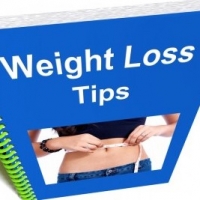Rating the Fad Diets
THE 200 POINT SYSTEM
With so many different diets available, how so are we to recognise
what works and what’s safe? Alter the make it a point is always to
discover the author’s background and the investigation behind
the diet’s methodology. Every balanced nutrition should give you a
background the write and his/her credentials and
knowledge of the fields of nutrition and biochemistry.
However, a vast resume does not necessarily mean a credible and
safe diet. Nonetheless it does suggest, not less than, that this author has
some knowledge of nutrition. Providing research behind the
diet proves the diet is not something the author
invented, providing that the analysis is just not self-serving and
altered to fit a hypothesis.
Some diets may not need a great deal of tests and studies
behind them, for the reason that use
fundamentals. Such as, many women’s magazines
have articles on dieting and weight-loss, however are
wise practice suggestions that almost all people concerned
about weight should know already: “Eat smaller meals”, “cut
down on sugar and fat”, etc., are typically philosophies. More
structured diets should give some scientific advantages for its
suggested success, preferably case studies and research
performed on everyday test subjects, and even athletes.
Since we’ve got established the significance of eating a
balanced diet relating to selecting sensibly and
obtaining RDA minimums, it will be possible now to rate the
diets in accordance to the specific criteria. Begin with a
score of 200 and subtract 10 points in the total each
statement below the place that the diet concedes. An excellent diet
should maintain a score of 200, but a score of 160 or
greater is acceptable.
1. Dieting will not add the daily food groups in adequate
amounts. Some celebrity diets eliminate a number in the food
groups. Tend not to deduct 10 points if a food group’s nutrients
(e.g., carbs, proteins, fats, fiber, vitamins, and minerals) are
adequately substituted start of one other food group.
2. The diet program does not provide at least 45% of the calories from
carbohydrate sources. In an effort to prevent ketosis, no less than
150g of glucose/day is necessary. That’s 33-50% of total
calorie consumption with a 1200-calorie diet. Remember is
the minimum. For highly active individuals, that amount
should increase to 60% often, i.e., soon after
exercise.
3. The carbohydrate content exceeds 20% concentrated
sugars. No less than 80% of carbohydrate sources must be
complex, and preferably such as vegetables, seeds,
and legumes.
4. The protein content exceeds 30%. An exceptionally high protein
intake is unnecessary, it places additional strain about the
urinary system, in fact it is an insufficient supply of energy. Thirty
percent might be more than adequate, even for growing children
and teenagers. Really the only group that will require higher protein
intake are the type of who recently suffered a severe injury (e.g.,
leg amputation), infection, or surgery. However, these
individuals will be under the care of your doctor that has a
special high protein diet.
5. Protein content is in charge of 15% or a lesser amount of total calories.
Although unnecessary in copious amounts, protein really has
many vital functions, including tissue repair and the
formation of enzymes.
6. Fats exceed 30% of total intake. Besides increasing the
risk of cardiovascular disease, high fat diets haven’t been
demonstrated dropping weight superior to other methods
of ‘proper’ eating.
7. Total fat consumption is lower than 15% of total calories.
Fat in moderate amounts is essential for a proper diet, and
a really diet provides taste to many foods. Fat intake below
15% for long periods, for some individuals, is unrealistic.
Fat intake that is definitely too low can certainly be detrimental to children
and teenagers who require ample kcalories for continued
growth.
8. Total fat consumption is a lot less than 25% essential fatty
acids, and saturated fat is a bit more than 30% of total fat
consumption. Deduct 10 per.
9. This diet isn’t going to suggest common foods, meaning
foods you should be qualified to obtain at any food market or
market.
10. The foodstuffs for any diet are costly or monotonous.
Some diets require the acquisition of ‘their’ foods or
expensive ‘organic’ foods only obtained through health food
stores. Some foods taste so bad they may be challenging
tolerate repeatedly (e.g., seaweed). Deduct 10 for every.
11. The diet program is made of an inflexible meal plan. The diet plan
isn’t going to allow for substitutions or deviations, requiring a
person to reside under ‘house arrest’ concentrating on the same food
selections each day.
12. The dietary plan provides less than 1200 kcalories per day.
Below that will your body’s basic functions will not be
obtaining energy, vitamins was required to work
properly, and also the dieter almost is for certain to feel hungry all
enough time. Diets below 1200 kcalories must be available to
those under the supervision of the dietitian or licensed
physician.
13. Dieting requires the use of supplements. In the event the diet
provides adequate energy and it’s also sensible,
supplements are unnecessary. ‘Fat accelerators,’ for instance
ephedrine, might increase the rate of weight loss, although the diet
must be able to get up on an unique merit. Some diet clinics
promote a large variety of herbal preparations and fat
accelerators, and also this is the place these clinics make their
money – not of their knowledge and ability as nutritionists.
14. This diet won’t recommend a realistic weight goal.
Diets should not be promoting the entire body of any Greek god or simply a
supermodel. They need to stop suggesting a person
lose 100 pounds (although 100 pounds overweight). Nor
should diets recommend weight reduction below the perfect
weight.
15. This diet recommends or promotes greater than 1-2
lbs/week weight-loss. Will not expect you’ll lose more fat than 1-2
pounds of fat every week – it truly is physically impossible unless
chronically obese, at which 3 pounds can be
possible. If above two pounds is lost each week, the
body change is caused by a loss of profits of water and/or muscle groups.
Gimmicks who advertise 10 pounds in 14 days may be
hardly true or maybe something in addition to fat is being
lost. Also keep in mind the fact that more fat somebody wishes to
lose, along with the less one has, the harder difficult and
slower it’s going to be to get rid of additional fat.
16. The diet plan won’t provide an evaluation of food habits.
Dieting needs to be a sluggish process during which somebody
changes normal diet regime. It should not include looking
for quick fixes and quick plans promising short cuts and
extreme changes – any person would not stay with these
programs and the like diets don’t work long-term. The
variety of kcalories eaten, plus the food selections and their
amounts, must be reevaluated frequently…
perhaps once every 1-2 months to discover the program’s
effectiveness.
17. Physical fitness is just not recommended within the
arrange for proper weight reduction. Losing weight occurs twice as
fast with exercise, and without exercise there’s a greater
tendency to forfeit lean muscle tissue together with fat. This really is
not ideal.
Introduction to VARIOUS DIETS
Low Carbohydrate Diets: Ketosis occurs, and this also presents
a similar problems as fasting. Once glycogen stores are
spent (which happens quickly with athletes and people who
start exercising regularly), glucose need to be constructed from protein
sources, and there is greater wear to the kidneys as a
result. Even on a high protein diet, some protein will be
obtained from body tissues so as to produce enough energy
to the nervous system and regular activity. The onset of
ketosis is definitely an indication that it process has begun plus its
not really a positive aspect, whichever pro-high-fat
authorities indicate.
Great losing weight over a low-carb weight loss program is evident due to
the reality that carbs hold water from the muscles in the ratio of merely one:3.
As carb intake decreases then so, too, does bloating.
Much water flushes on account of not enough glycogen to support
water molecules. Moreover, by increasing protein intake,
excess nitrogen flushes with much more water ever since the
kidneys use water to dilute the concentration of nitrogen.
Once leaving a low-carb diet plus the muscles refill with
glycogen, fluid concentrations increase plus the dieter
regains a lot of the weight.
Low-calorie diets of 400-600 kcalories that consist primarily
of protein have the same problems as fasting and
low-carbohydrate diets: proteins can be used for energy and
weight-loss comes largely from water. Low-cal diets must
be supervised properly by a health care provider for
as a final measure if you cannot seem to slim down by
other methods. However, even the select few are inclined to
regain almost all of how much they weigh back as soon as they come back to a
balanced diet.
Beverly Hills Diet – a diet plan which includes grapefruit, eggs, rice,
and kelp; it really is deficient in nutrients and vitamins.
Cambridge Diet – an incredibly low kcalorie (300-600 kcal/day);
protein/carb mixture with mineral imbalances; the dieter is
all-around fasting.
Complete Scarsdale Diet – the diet plan is unbalanced
nutritionally; some days are calorically restricted; the dieter
alters portions of carbohydrate, protein, and fat; the diet plan
contains low carbs (20-50 g/day), and high fat and
protein; the dietary plan carries a high meat (saturated fat and
cholesterol) content.
Dr. Atkin’s Diet Revolution – the dietary plan is unbalanced
nutritionally; some days are calorically restricted; the dieter
alters portions of carbohydrate, protein, and fat; carbs are
nominal (20-50 g/day), whereas fat and protein are high;
there is high meat (fats and cholesterol)
consumption.
Dr. Linn’s Last Chance Diet – this diet includes a minimal
kcalorie intake (300-600 kcal/day); it has a
protein/carb mixture by using a mineral imbalance; the dieter is
close to fasting.
Dr. Reuben’s The Save Your Life Diet – this can be a calorically
dilute diet composing of high fiber (30-35g/day); the diet is
reduced fat and animal products; you can find poor absorption of
minerals due to too much high fiber.
“Fake” Mayo Diet – the diet program is made of grapefruits, eggs,
rice, and kelp; it truly is deficient in nutrients and vitamins.
F-Plan Diet – this is the calorically dilute diet composing of
high fiber (30-35g/day); it really is lower in fat and animal products;
there is certainly poor absorption of minerals because of an excessive amount of
fiber.
LA Costa Spa Diet – the dietary plan promotes fat loss of 1-1_
lbs/day; there are several plans of 800, 1000, and 1200
kcal/day constructed from 25% protein, 30% fat (mostly
polyunsaturates), and 45% carbohydrate; the diets includes
several food groups.
Medifast Diet – the dietary plan is balanced nutritionally, but
provides only 900 kcal/day; utilization of liquid formulas makes
the diet program monotonous and expensive.
Nutrimed Diet/Medifast Diet – this is the nutritionally balanced
diet, nonetheless it supplies only 900 kcal/day; the employment of liquid
formulas makes the diet plan monotonous and expensive.
Optifast Diet – the diet plan is nutritionally balanced, but
supplies only 900 kcal/day; usage of liquid formulas makes
the diet plan monotonous and expensive.
Pritikin Permanent Weight-Loss Diet – this is a nutritionally
unbalanced diet; some days are calorically restricted; the
dieter alters portions of carbohydrate, protein, and fat; the
diet includes high protein (100 g/day); unless the foods
properly chosen, it can be lower in vitamin B12.
Prudent Diet – that is a balanced, low kcalorie (2400
kcal/day) diet for guys; it’s lower cholesterol and saturated
fats; no more than 20-35% calories are resulting from fat
with an focus on protein, carbohydrates, and salt; there
is ample consumption of fish and shellfish, and saturated
fats are substituted with polyunsaturated fats.
Quick Weight Loss Diet – the dietary plan is unbalanced
nutritionally; some days are calorically restricted; the dieter
alters portions of carbohydrate, protein, and fat, although
there is certainly low carbs (20-50 g/day), and high-fat and protein;
there’s high meat consumption (fats and
cholesterol) using this type of diet.
San fran Diet – the diet plan begins at 500 kcal/day,
consisting of two meals each day of merely one fruit, one vegetable,
one slice of bread, as well as meat exchanges; your second
week limits carbohydrates, with many food coming from the
meat group along with some eggs and cheese, and some
vegetables; week three includes fruit; in week four there’s
a rise in vegetables; week five the dieter add
fat-containing foods (e.g., nuts, avocados); week six
includes milk; week seven includes pastas and bread,
the spot that the weight loss program is maintained at about 1300 kcal/day; this
diet avoids the challenge of fatty foods and cholesterol.
Slendernow Diet – the diet plan is unbalanced nutritionally;
some days are calorically restricted; the dieter alters
portions of carbohydrate, protein, and fat; the protein is
generally high (100 g/day); unless foods are properly
chosen, there can be a deficiency in vitamin B12.
Weight-Watchers Diet – the diet plan is balanced nutritionally, at
about 1000-1200 kcal; using high nutrient-dense foods are
consumed; economic and palatable food makes it among
probably the most successful diets devoid of real health risks.
Wine Diet – this diet is approximately 1200 kcal/day, containing 28
menus in addition to a glass of dry table wine while dining;
in addition to the medicinal parts of wine, it’s believed
that individuals reduce helping sizes when wines are
consumed using a meal; the diet program is reduced cholesterol and
unhealthy fats; we have a target fish, poultry, and veal with
moderate levels of beef.
Yogurt Diet – this diet consists of two versions, being
900-1000 kcal/day, and 1200-1500 kcal/day; plain low-fat
yogurt could be the main dairy dish, consumed at breakfast, lunch,
and since a bedtime snack; the diet has scary levels of protein, plus its
lacking in cholesterol, fats, and refined carbohydrates.
This great article have a very worthwhile stuff in regards to the diets like leaky gut as well as the other some may be leaky gut syndrome it helps alot to every one folks facing problem about diet.
- Prev:Best Fad Diets
- Next:When it comes to Diet plans
-
How Long Will It Take To Lose Weight?
Imagine how nice it would be to know how long it might take to be swim
-
Blueberries For Weight Loss
Youve probably seen or heard about the benefits of blueberries but sho
-
10 Proven Ways To Lose Belly Fat Fast
Lose belly fat and enjoy a 6pack Having alot of
-
A Low Cholesterol Diet Plan That Really Works
Veggie lover weight control plans are by and large rich in cancer pre
-
Week Three: Weight Loss Is a Balancing Act
Last updated: Oct 04, 2010 By Julie
-
Cellulite Facts and Misguided beliefs to clear out
botanical slimming may be the fatty deposits who have produced underne
- DON'T MISS
- Some Clever Weight-Loss Hints
- Can Your Find a Quick Weight Loss Diet?
- Say Goodbye To Overweight With Cplex 60
- Pick the Right Nassau Fitness Center to Save Money and Time
- Crazy weight loss mantras for the most lazy!
- Fat Burning Furnace Poulos
- The Low Body Fat Secret Of Bodybuilders And Fitness Models
- So You Wannabe A Small Business Owner?
- Lose Weight Fast In One Mont
- Indian Weight Loss Blog Success Stories




